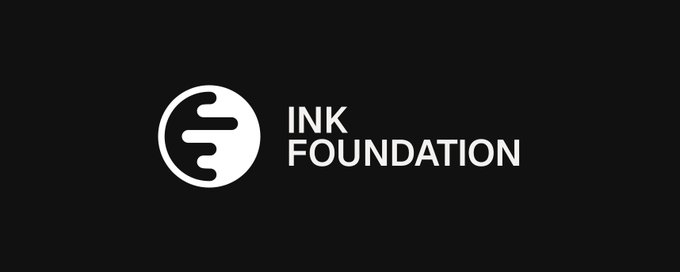Ink Protocol: A Professional-Grade Capital Market on the Optimism Superchain
Ink Protocol is an Ethereum Layer2 blockchain led by the Cayman Islands–registered Ink Foundation. Built on OP Stack, it is integrated into the Optimism Superchain ecosystem. The project positions itself as institutional-grade on-chain capital market infrastructure, aiming to resolve DeFi’s fragmented liquidity and lack of professional tools. Key innovations include:
-
High-performance OP Stack optimization: Achieves 4,200 TPS via parallel transaction processing (40% higher than Base chain); zero-knowledge proof compression lowers gas fees to $0.0012.
-
Native integration of Aave V4: Builds Concentrated Liquidity Vaults (CLVs), allowing LPs to set price ranges, increasing capital efficiency by 300%.
-
Permanently fixed token supply: 1 billion tokens with no inflation. Initial airdrop targets early liquidity protocol participants.
The project plans to launch its token in Q3 2025, followed by mainnet in Q4, aiming to become the first Layer2 infrastructure serving professional capital.

This market insight discusses Ink Protocol’s OP Stack-based Layer2 architecture, its fixed-supply INKtoken mechanism, and Aave-driven liquidity protocol design.
Technical Architecture: Superchain Integration and Liquidity Innovation
Three deep optimizations of the OP Stack lay the performance foundation:
-
A parallel transaction engine enables simultaneous execution of multiple transactions, achieving 4,200 TPS, far exceeding Base’s 3,000 TPS.
-
ZK-assisted Calldata compression reduces on-chain data costs by 65%, with a single swap costing only $0.0012.
-
A native Superchain interoperability layer enables 2-second cross-chain communication with OP ecosystem chains (e.g., BaseMode), eliminating the need for third-party bridges.
Aave-powered liquidity protocol is INK’s first application scenario:
-
Direct integration of Aave V4 codebase, supporting flash loans and floating interest models.
-
Introduction of Concentrated Liquidity Vaults (CLVs), allowing LPs to set price ranges (e.g., ETH/USDC between 3,000–3,500), improving capital efficiency by 30% over Uniswap V3.
-
LPs stake INK tokens to receive fee dividends (estimated 7–12% APY); burning It unlocks advanced features such as risk management dashboards.
See JuCoin L2 Data Analytics for Superchain performance comparison.
Token Economics: Scarcity and Utility Binding
INK adopts an absolutely deflationary model, restructuring value logic with two core principles:
-
Permanently fixed supply: 1 billion tokens with no minting rights; governance cannot alter total supply (unlike most variable-supply tokens).
-
VC-free distribution: 55% released via ecosystem actions (airdrop + liquidity mining); 45% ecosystem fund managed by foundation’s wholly owned subsidiary, no private sales.
Token utility drives value capture:
-
Governance: Stake INK to vote on liquidity protocol parameters (e.g., fee rates, asset whitelists).
-
Feature access: Burn INK to access CLV strategy backtesting tools and other professional facilities.
-
Ecosystem participation: Third-party protocols must stake INK to access Ink infrastructure (e.g., on-chain structured product platforms).
Airdrop uses Proof of Contribution, based on on-chain interaction depth and liquidity contribution scores, with behavioral analysis models to counter Sybil attacks.
Roadmap: From Liquidity Protocol to Full-Stack Capital Markets
Three-Phase Roadmap
-
Q3 2025: INK token issuance and first airdrop targeting early testnet users and CLV liquidity providers.
-
Q4 2025: Aave liquidity protocol mainnet launch, targeting $500M TVL within 90 days.
-
Q1 2026: Release of structured product engine supporting interest rate swaps, snowball options, and complex derivatives.
Ecosystem Expansion Strategy
-
Institutional onboarding: Integration with Fireblocks MPC wallets and Copper compliance framework for traditional capital onboarding.
-
Developer incentives: $20M grant fund prioritizing CLV-based derivative protocols.
-
Cross-chain asset management: Chainlink CCIP enables one-click rebalancing across Superchain, lowering multi-chain ops costs.
Risks and Challenges: Regulatory and Technical Dual Fronts
Structural Risks
-
Regulatory arbitrage concerns: Cayman foundation setup may trigger SEC “regulatory evasion” probes (see Uniswap case).
-
Aave dependency risk: Delays in Aave V4 (currently 87% complete) could postpone Ink’s mainnet launch.
-
Liquidity concentration: CLV model may suffer from local liquidity depletion in volatile markets.
Token Economy Tests
-
Low initial liquidity: Circulating supply below 20% in year one may lead to severe price volatility.
-
Burn pressure: Requires daily volume of $150M to achieve annual burn of 837M tokens.
Competitive Landscape: Positioning Within the Superchain
Compared with retail-focused L2s like Mode, Ink targets institutions with threefold advantages:
-
Performance edge: 4,200 TPS and $0.0012 gas supports high-frequency trading.
-
Professional tools: CLV vaults and risk dashboards serve institutional capital.
-
Token utility: Burn mechanisms create hard demand, preventing governance token value loss.
Project success hinges on three KPIs: $500M TVL within 90 days, 3 TradFi asset managers with $1B+ AUM onboarded, and It burn reaching 8% of circulating supply annually. If successful, Ink could drive DeFi into “Wall Street 2.0”; if not, simpler alternatives from Solana may take its place.





